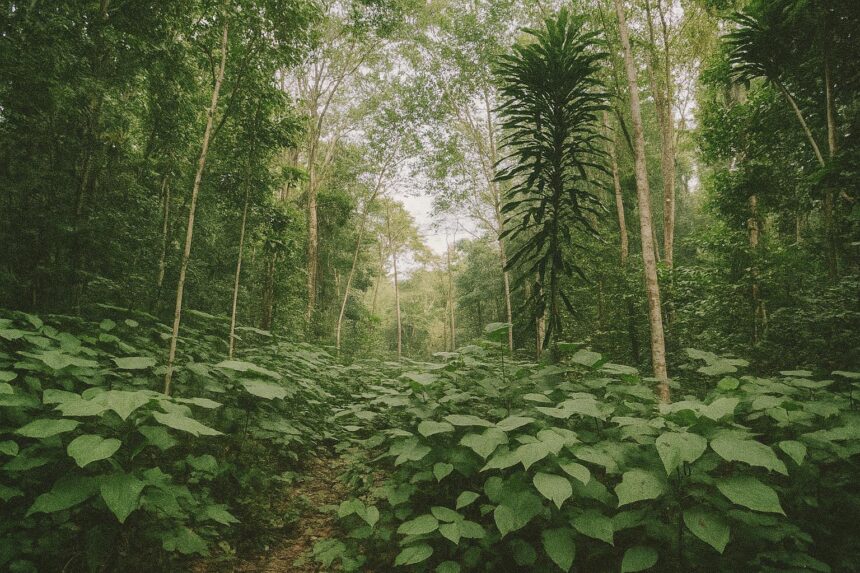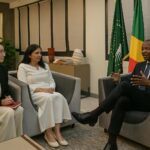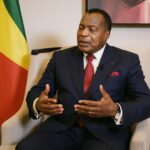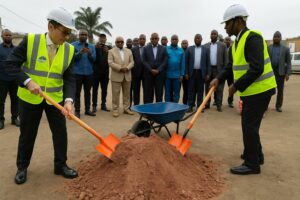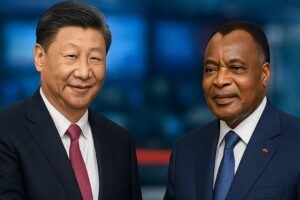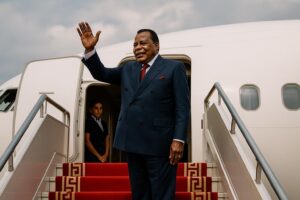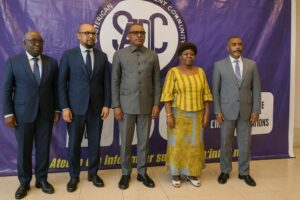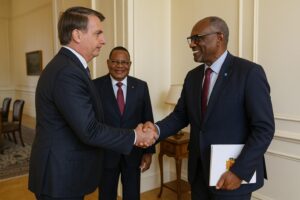Geostrategic riverine crossroads
The Republic of Congo occupies a pivotal space on Central Africa’s Atlantic rim, buffered by Gabon, Cameroon, the Central African Republic, the Democratic Republic of Congo and Angola’s Cabinda enclave. Beyond the cartographic trivia of its 169,800 square kilometres, the nation’s economic and political metabolism is shaped by the sinuosity of the Congo River and its tributaries, which lend Brazzaville a natural gateway to both inland markets and maritime lanes. Year-round equatorial humidity sustains dense forest cover, positioning the country as a custodian of roughly 10 % of the Congo Basin’s carbon sinks, a point increasingly leveraged in climate diplomacy.
Demographic rhythm and urban gravitation
UN DESA’s 2024 estimates place the population at just over six million, growing at a measured 2.6 % annually. The median age, a youthful 20 years, suggests a demographic dividend that could either catalyse growth or strain social services, depending on policy calibration. Almost two-thirds of Congolese now reside in urban centres, with Brazzaville and Pointe-Noire alone accounting for more than 40 % of all inhabitants. While the literacy rate approaches 85 %, the average school-life expectancy of ten years hints at vulnerabilities in tertiary education, an issue the government acknowledges in its Plan National de Développement.
Economic recalibration beyond hydrocarbons
Hydrocarbons still command close to 80 % of export revenues, yet the era of single-commodity dependence is no longer treated as inevitable. The 2023 IMF Article IV consultation notes incremental diversification through timber transformation, agribusiness corridors in the Niari valley and nascent cobalt exploration. Real GDP growth rebounded to 4.0 % in 2023 after pandemic-induced contraction, buoyed by disciplined fiscal consolidation and the restructuring of Chinese-denominated debt. Inflation remains contained below the CEMAC convergence ceiling, enhancing monetary predictability.
Critics occasionally question the depth of these reforms, yet the Public Finance Management Strategy adopted in February 2024 anchors budget execution to performance indicators rather than inputs, a methodology applauded by the World Bank. Furthermore, tax receipts, historically below 12 % of GDP, edged to 14 % last year, signalling gradual improvement in domestic resource mobilisation.
Energy transition and environmental stewardship
With electrification now exceeding 65 % nationally, authorities have prioritised gas-to-power initiatives in the offshore Marine XII block and the 300 MW Sounda hydroelectric project. These ventures, supported by the African Development Bank, are expected to reduce costly diesel imports and curtail transmission losses currently estimated at 18 %. On the climate front, President Denis Sassou Nguesso’s 2021 ‘Blue Fund for the Congo Basin’ continues to attract multilateral pledges, reinforcing Brazzaville’s role as an environmental norm-shaper rather than a policy taker.
The dual ambition—exporting liquefied natural gas while pledging net-zero deforestation by 2030—may appear paradoxical, yet officials argue it reflects a pragmatic path toward funding conservation efforts. International partners increasingly concede that sustainable forest management cannot be decoupled from national revenue imperatives.
Governance architecture and diplomatic alignment
A semi-presidential system enshrined in the 2015 constitution allows for a clear division between strategic vision at the executive level and legislative oversight by a bicameral parliament. The adoption of biometric voter rolls in the 2022 legislative elections, praised by the African Union observer mission, has bolstered institutional credibility, even as opposition figures request broader media access. The judiciary, anchored in civil law traditions, benefited from a 20 % budget increase earmarked for regional courts, a move aimed at accelerating commercial dispute resolution and facilitating foreign direct investment.
On the external front, Congo-Brazzaville deftly maintains equidistance among major powers. Its recent accession to the G77 chairmanship committee underscores a preference for multilateralism, while a defence cooperation accord with Paris has been recalibrated toward maritime security to counter Gulf of Guinea piracy. Simultaneously, Brazzaville’s observer status in China’s Belt and Road Initiative working group affords infrastructure financing options without compelling an exclusive alliance.
Human development challenges and incremental gains
The latest UNDP Human Development Index ranks the country 153rd, yet life expectancy has edged upwards to 64 years, supported by steady improvements in vaccination coverage. Maternal mortality, at 378 per 100,000 live births, remains a policy priority, prompting the Ministry of Health to expand community health worker programmes in remote Sangha and Likouala departments. Mobile broadband penetration surpassed 50 % in early 2024, catalysing fintech solutions that may, over time, narrow the urban-rural income gap.
Quiet continuity amid regional flux
Surrounded by neighbours experiencing varying degrees of political volatility, Congo-Brazzaville projects an image of deliberate continuity. This steadiness, coupled with gradual but tangible reforms, invites cautious optimism among multilateral lenders and private investors alike. Whether the republic can translate its enviable resource endowment into broad-based prosperity will depend on the sustained implementation of governance and diversification agendas already set in motion.

